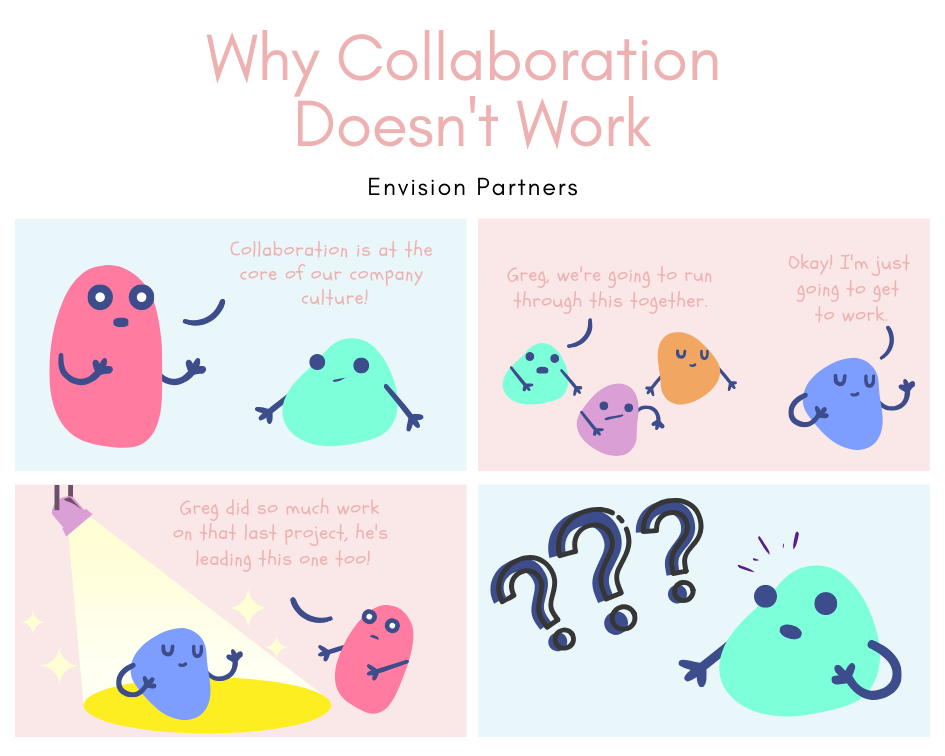Getting Conversations on the Same Page
In the book, “Death by Meeting”, the author Patrick Lencioni indicates the primary cause of ineffective meetings is that we try to do too much in a meeting and that the different topics in a meeting require different kinds of thinking. Some topics are purely informational; some require quick input; some require debate and discussion. As a result, Lencioni suggests, there should be 4 kinds of meetings:
- Daily check-ins to share daily schedules and activities. These meetings should be 5 minutes.
- Weekly tactical meetings should be held weekly for 45-90 minutes to review weekly metrics and resolve obstacles and issues.
- Monthly strategic meetings will take 2-4 hours to discuss, analyze, brainstorm and decide on long-term issues.
- Quarterly off-site reviews to discuss strategy, industry trends, key personnel and team development can take 1-2 days.
In these meetings, not only are the topics different, the meeting formats, the length, when information is delivered to participants, and how the agendas are built are also different.
The separation of topics into these categories makes sense because if we are in a debating frame of mind on one topic, for example, participants then find it difficult to not debate the following topic that informs us of the next office party! I bet you recognize that phenomenon.
This concept to identify and separate dialogue into different purposes is supported by David Rock in “Quiet Leadership”. In his model, David Rock identifies 5 types of conversations. These conversations can take place in one-on-one settings or in meetings.
- Vision conversations are about asking why we want to do this project or what we are trying to achieve. These conversations are high-level and focus solely on the purpose or end-goal.
- Planning conversations happen once you know where you are headed. This conversation focuses on how without going into details.
- Detail conversations are different totally. This is where we tend to go naturally, making other types of conversations the more difficult ones to achieve.
- Problem conversations should take place only when things go wrong. This might be the only conversation that is backward looking. (I would suggest adding a solution conversation, that is not included in this book.)
- Drama conversations are intended only for venting or grieving.
Take a moment to think about the last meeting you were in. You probably saw people discussing the same topic, but were having different kinds of conversations. If some people in the group were having a vision conversation and others were in a detail conversation, they were likely talking right past each other. Likewise, if the manager is having a strategy conversation and the employee is having a drama conversation, not much progress can be made.
In a one-on-one, or in a group meeting, the conversation should take only one of these forms. In a given sitting, the conversation may shift from one form to another, but the type of conversation and the shift should be identified and known to all.
Lencioni recommends that meetings have different formats based on the desired outcome of the meeting. Likewise, Rock recommends that a conversation (one-on-one or within a meeting) should have a known purpose, and this should be identified for all. This knowledge may not impact the format or length of the conversation in a completely predictable way, but it will impact the conversation by making it more efficient and effective.
Try it out. Use this cheat sheet to ask your conversation counterpart the purpose of the conversation and have that conversation with them, not the one you thought you were having.
Death by Meeting, Patrick Lencioni, Jossey Bass a Wiley Imprint, 2004
Quiet Leadership, David Rock, Harper Collins, 2006











